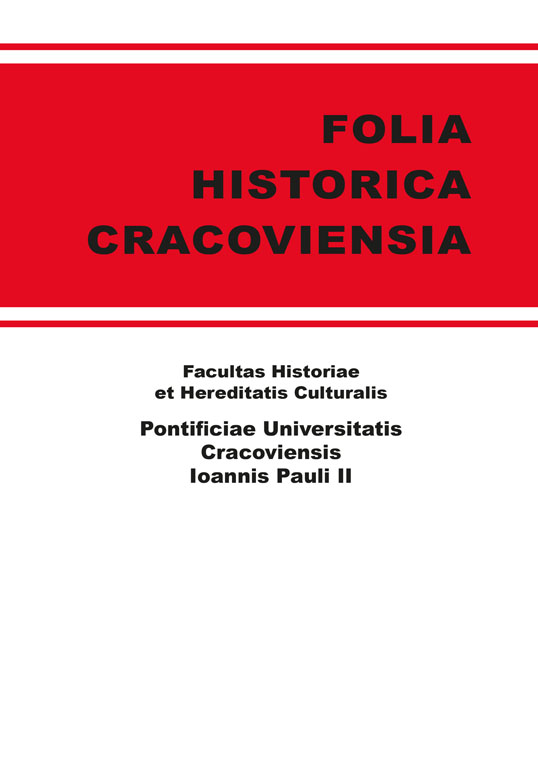The history of the Discalced Carmelite Monastery in Nowy Wiśnicz between 1630–2009
DOI:
https://doi.org/10.15633/fhc.237Keywords:
Carmelite Order, Nowy Wisnicz, Early Modern PeriodAbstract
After winning the battle against the Turks at Chocim in 1621, Stanisław Lubomirski, the owner of Wiśnicz, founded the monastery of the Discalced Carmelites as a votive offering to God. Religious authorities feared the location of the monastery and church in private estates due to the potential impact of the court on religious life. In 1622 the founder began the construction at full swing, employing great numbers of labourers and prisoners of war. The process of the construction was supervised by Lubomirski’s court architect, an Italian Maciej Trapola. The buildings were characterized by a modern style of architecture and they occupied a unique position in the history of Polish architecture. The property was fortified and also served as defence for the castle of Wiśnicz.
On May 26, 1630 a ceremony was held to introduce the Carmelites to the monastery in Wiśnicz. The construction works were completed in 1635. The interior was very well equipped and, in the seventeenth century, was considered one of the best equipped Discalced Carmelite monasteries.
On September 1, 1650 the Swedes captured the castle and monastery destroying, looting and pillaging the most precious things including the library and the works of art. The monastery in Wiśnicz after the partition of Poland was incorporated into Austria. Emperor Joseph II through his policies led to the suppression of monasteries, including the monastery in Wiśnicz. He robbed the monastery, took away the monastic treasury and allocated the church estates to religious funds. The most valuable works of art were taken to Vienna (two wagons of paintings). The buildings of the monastery were converted to perform the functions of a prison, criminal court and housing for judges.
After regaining independence in 1918, despite the protests of the Carmelites, the prison in the monastery continued to function. In September 1939, the Germans used it as a camp for prisoners of war and later a concentration camp. They robbed the church and started to demolish the walls of the church. The material from the temple was used in the construction of the residences for Hans Frank in Przegorzały and Krzeszowice. There is still a prison in the monastery buildings and the ruins of the church serve as a playground for the prisoners.
Downloads
Published
Issue
Section
License
Copyright (c) 2013 Zdzisław Gogola

This work is licensed under a Creative Commons Attribution-NonCommercial-NoDerivatives 3.0 Unported License.
Authors who publish with this journal agree to the following terms:
- Authors retain the copyright and full publishing rights without restrictions, and grant the journal right of first publication with the work simultaneously licensed under a Creative Commons Attribution 4.0 International License that allows others to share the work with an acknowledgement of the work's authorship and initial publication in this journal.
- Authors are able to enter into separate, additional contractual arrangements for the non-exclusive distribution of the journal's published version of the work (e.g., post it to an institutional repository or publish it in a book), with an acknowledgement of its initial publication in this journal.
- Authors are permitted and encouraged to post their work online (e.g., in institutional repositories or on their website) prior to and during the submission process, as it can lead to productive exchanges, as well as earlier and greater citation of published work (See The Effect of Open Access).

